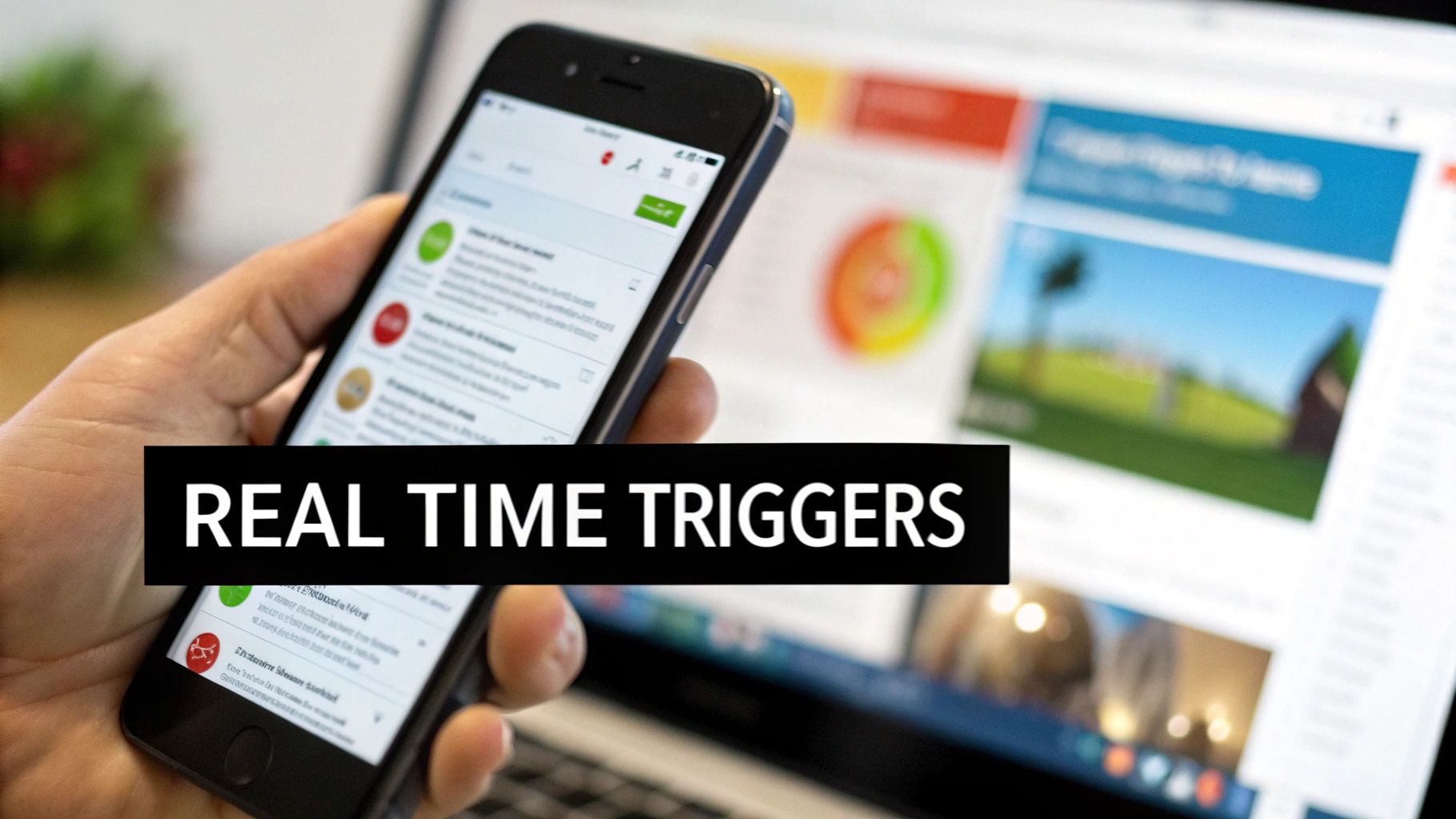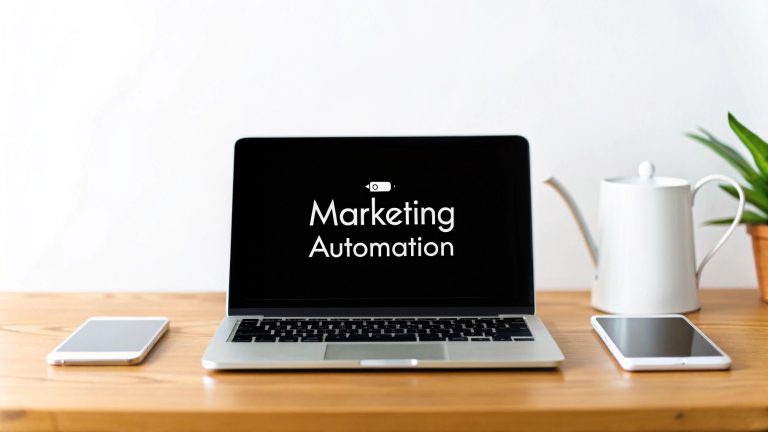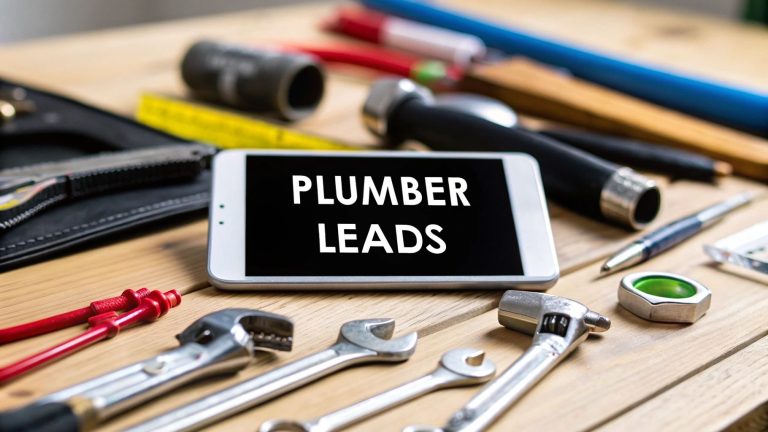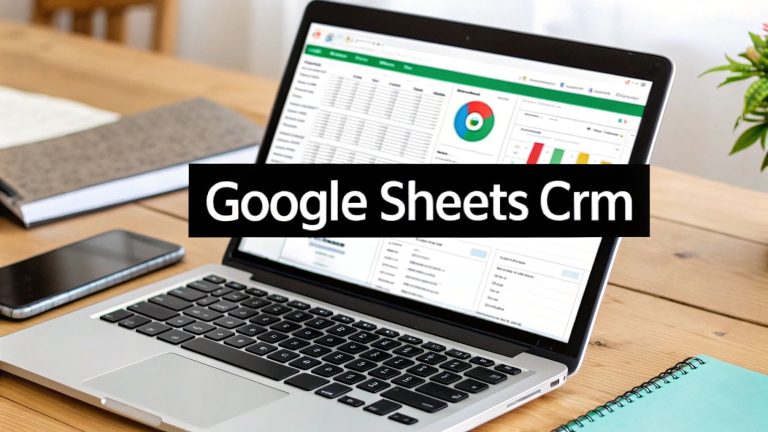10 Powerful Marketing Automation Example Workflows for 2025
Marketing automation is more than just a time-saver; it’s a strategic engine for growth. While many businesses know they should use it, figuring out how can be overwhelming. The key isn't just to automate tasks, but to build intelligent, responsive systems that nurture leads, delight customers, and drive revenue without constant manual effort. This approach frees up your team to focus on high-impact strategy rather than repetitive, time-consuming processes.
This guide moves past generic advice to provide a deep dive into ten powerful marketing automation example workflows. We will dissect the strategy behind each one, offering a clear blueprint with actionable takeaways you can implement immediately. You'll see precisely how to set up triggers for behavioral marketing, implement sophisticated lead scoring, and create personalized customer journeys that convert. To truly understand the practical application of automation, delving into actual case studies is invaluable. For instance, you can explore detailed breakdowns in these 7 marketing automation example workflows to see the principles in action.
Get ready to see how real businesses are using automation not just to work faster, but to build smarter, more profitable customer relationships. We'll break down the specific tactics, tools, and logic you need to replicate their success.
1. Email Drip Campaigns
Email drip campaigns are a quintessential marketing automation example that involves sending a pre-written sequence of emails to prospects or customers over a specific period. These campaigns operate based on set schedules or user actions (triggers), such as signing up for a newsletter or downloading an ebook. The primary goal is to nurture leads through the sales funnel by consistently delivering valuable, relevant content without manual intervention. This automated follow-up keeps your brand top-of-mind and builds a relationship with your audience over time.

This method automates engagement, ensuring no lead falls through the cracks and guiding each subscriber toward a conversion goal. Companies like HubSpot and Mailchimp have popularized this tactic, demonstrating its power in everything from welcome series to complex lead nurturing flows.
Strategic Breakdown
An effective drip campaign is not just a series of random emails; it's a carefully mapped journey. For instance, an e-commerce brand like Klaviyo might implement an abandoned cart flow. The first email is a simple reminder, the second might offer a small discount, and the third creates a sense of urgency.
The core strategy is to match the content of each email to the subscriber's stage in the customer lifecycle, progressively building trust and demonstrating value.
Actionable Takeaways
To implement a successful drip campaign, focus on these key tactics:
- Audience Segmentation: Group your audience by their behavior, interests, or signup source to send highly targeted messages.
- Clear Calls-to-Action (CTAs): Every email should have a specific purpose and a clear next step for the reader to take.
- Value-Driven Content: Provide helpful tips, exclusive content, or special offers rather than just sales pitches. Personalize content beyond just using a first name to create a genuine connection.
For a deeper dive into crafting these sequences, you can explore various email marketing automation strategies.
2. Lead Scoring and Qualification
Lead scoring is a powerful marketing automation example that ranks prospects based on their perceived value to an organization. This system assigns points for various attributes, behaviors, and demographic information, such as opening an email, visiting the pricing page, or having a specific job title. The primary goal is to automatically identify which leads are "sales-ready," allowing marketing and sales teams to prioritize their efforts on prospects who are most likely to convert. This automated process ensures that high-potential leads receive immediate attention while others are placed into nurturing funnels.
Platforms like HubSpot and Salesforce have championed this method, integrating it deeply into their CRM and marketing platforms. By automating the qualification process, companies can significantly boost sales efficiency, shorten the sales cycle, and improve alignment between marketing and sales teams, ensuring everyone focuses on the most valuable opportunities.
Strategic Breakdown
An effective lead scoring model goes beyond simple actions and considers both explicit and implicit data. Explicit data includes information directly provided by the lead (e.g., company size, industry), while implicit data is based on their behavior (e.g., website pages visited, content downloaded). For instance, a lead from a target industry (explicit) who also visits the pricing page (implicit) would receive a high score.
The core strategy is to create a dynamic scoring system that accurately reflects a lead's intent and fit, ensuring the sales team engages with the right people at the perfect time.
Actionable Takeaways
To implement a successful lead scoring system, focus on these key tactics:
- Define Your Ideal Customer Profile (ICP): Work closely with your sales team to establish clear criteria for what constitutes a qualified lead based on firmographic and demographic data.
- Assign Point Values Logically: Weight actions that signal strong purchase intent, like requesting a demo, more heavily than top-of-funnel activities, such as reading a blog post.
- Set Clear Handoff Thresholds: Determine a specific score that, once reached, automatically triggers a notification and transfers the lead from marketing to the sales team for immediate follow-up.
For a more comprehensive look at setting up your own system, you can explore the fundamentals of what is lead scoring.
3. Behavioral Trigger Marketing
Behavioral trigger marketing is a sophisticated marketing automation example that sends real-time messages based on specific user actions. Instead of relying on a pre-set schedule, this approach reacts to what a customer does (or doesn't do), such as visiting a pricing page, downloading a whitepaper, or adding an item to their cart. The goal is to deliver a highly relevant, timely interaction that capitalizes on the user's immediate intent, significantly boosting engagement and conversion rates.

This method automates personalization at scale, ensuring each communication feels uniquely tailored to the individual's journey. Platforms like Intercom and Customer.io have excelled at this, enabling businesses to send messages like Amazon's product recommendations after browsing or LinkedIn's content suggestions based on your recent activity.
Strategic Breakdown
An effective behavioral trigger strategy requires a deep understanding of the customer journey map. For example, a SaaS company might trigger a personalized email with a case study after a user visits a specific feature page three times in one week. This action signals strong interest, making the follow-up message incredibly relevant.
The core strategy is to interpret user behavior as a direct signal of intent and respond instantly with a message that guides them toward the next logical step in their journey.
Actionable Takeaways
To implement powerful behavioral triggers, focus on these key tactics:
- Map Key User Actions: Identify critical touchpoints in your customer journey (e.g., video views, help-doc searches) that indicate intent or confusion.
- Set Frequency Caps: Protect users from message fatigue by limiting the number of automated communications they receive within a certain period.
- Use Progressive Profiling: Enhance personalization by collecting user data over time and using it to refine the relevance of your triggered messages.
To see how these triggers fit into larger sequences, explore these marketing automation workflow examples.
4. Landing Page and Form Auto-Population
Landing page and form auto-population is a powerful marketing automation example that dynamically personalizes content and pre-fills form fields for returning visitors. Using data from cookies or known information in your CRM, this system reduces friction by eliminating repetitive data entry for the user. The primary goal is to create a seamless, tailored experience that significantly boosts conversion rates by making it faster and easier for leads to take action.

This automation streamlines the lead capture process, making visitors feel recognized and valued while accelerating their journey through the funnel. Platforms like Marketo, HubSpot, and Instapage have made this technology accessible, allowing businesses to implement sophisticated personalization tactics like progressive profiling and account-based landing pages.
Strategic Breakdown
The strategy behind auto-population is to intelligently gather information over time without overwhelming the user. For instance, a Pardot progressive profiling form might only ask for a visitor's name and email on their first visit. On their second visit to download a new resource, the form recognizes them and instead asks for their company name and job title.
The core strategy is to incrementally build a detailed lead profile by asking for new information on each interaction, improving data quality while keeping the conversion path as frictionless as possible.
Actionable Takeaways
To effectively implement form and landing page automation, concentrate on these tactics:
- Implement Progressive Profiling: Gradually ask for more information over multiple visits to build a comprehensive profile without intimidating new leads with long forms.
- Leverage Known Visitor Data: Personalize landing page headlines, images, and offers based on the visitor’s industry, company, or past interactions to increase relevance.
- Maintain Data Privacy Compliance: Ensure your data collection practices are transparent and comply with regulations like GDPR and CCPA, balancing personalization with user trust.
5. Social Media Scheduling and Posting
Social media scheduling is a powerful marketing automation example that allows marketers to plan and publish content across various platforms in advance. Instead of manually posting in real-time, tools automatically share pre-created content at optimal times. This automation ensures a consistent online presence, saves significant time, and helps brands engage with their audience when they are most active. It transforms social media management from a reactive, daily task into a proactive, strategic function.
This method automates the content delivery pipeline, enabling brands to maintain a steady stream of communication and build brand visibility. Platforms like Buffer and Hootsuite have pioneered this approach, offering sophisticated suites that manage everything from content calendars to performance analytics, making it an indispensable tactic for modern marketers.
Strategic Breakdown
Effective social media automation is more than just "setting and forgetting." A successful strategy involves using platform analytics to identify peak engagement hours for your specific audience. For instance, a B2B company using Sprout Social might schedule industry insights for weekday mornings and company culture posts for Friday afternoons.
The core strategy is to use automation for consistency while freeing up human resources for genuine, real-time engagement and community management.
Actionable Takeaways
To implement a successful social media scheduling strategy, focus on these key tactics:
- Determine Optimal Times: Use the analytics tools within platforms like Later or Buffer to discover when your audience is most likely to see and interact with your content.
- Balance Automation and Engagement: While posts can be scheduled, set aside time to manually monitor comments, reply to messages, and participate in relevant conversations.
- Maintain an Authentic Voice: Ensure your scheduled posts reflect your brand's personality. Avoid a robotic tone by writing copy that is genuine, timely, and engaging.
6. Personalized Product Recommendations
Personalized product recommendations are a powerful marketing automation example where AI-driven systems suggest relevant products to users. This automation analyzes a customer's browsing history, purchase behavior, and data from similar user profiles to present tailored suggestions. The primary goal is to enhance the customer experience by showing them items they are likely to want, which in turn increases average order value and customer satisfaction. This strategy moves beyond generic marketing by creating a one-to-one conversation with each shopper.
This technology automates the process of upselling and cross-selling, making it highly scalable and effective. Giants like Amazon with its "Customers who bought this also bought" feature and Netflix with its content suggestions have proven the immense value of this approach. It makes customers feel understood and guides them toward discoveries they'll love.
Strategic Breakdown
An effective recommendation engine doesn't just push popular items; it creates a personalized shopping journey. For example, a beauty retailer like Sephora might use an algorithm that considers a customer's past purchases of vegan skincare, their recent views of a specific brand's foundation, and what similar customers have bought. The system then recommends a complementary vegan concealer from that same brand.
The core strategy is to leverage user data to predict future interests, creating a seamless and highly relevant discovery process that drives incremental sales.
Actionable Takeaways
To implement personalized product recommendations successfully, focus on these key tactics:
- Utilize Diverse Data: Combine behavioral data (clicks, purchases) with demographic information to create a more complete customer profile for more accurate suggestions.
- Test Recommendation Logic: Experiment with different algorithms, such as collaborative filtering (what similar users like) or content-based filtering (what's similar to items you like), to see what performs best.
- Implement Feedback Loops: Allow users to rate recommendations or indicate "not interested." This feedback helps the automation learn and improve the quality of its future suggestions.
7. Customer Journey Automation and Attribution
Customer journey automation is a sophisticated marketing automation example that tracks and orchestrates customer interactions across multiple touchpoints. It moves beyond single-channel campaigns to create a cohesive, personalized experience throughout the entire buying process. By mapping and automating responses to customer actions on your website, app, social media, and email, this strategy provides deep insight into which marketing efforts truly drive conversions. This automated nurturing ensures prospects receive the right message at the right time, guiding them smoothly from awareness to purchase.
This method automates the analysis of complex customer paths, attributing value to each touchpoint and revealing the most effective channels. Platforms like HubSpot, Salesforce, and Marketo have championed this approach, enabling businesses to visualize and optimize the entire customer lifecycle, rather than just isolated interactions.
Strategic Breakdown
Effective journey automation requires a clear understanding of the customer's path from initial contact to final conversion. For example, a platform like Heap might track a user who first discovers a brand via a blog post, later signs up for a webinar, and eventually converts after receiving a targeted email offer. Each step is automatically logged and analyzed to build a complete picture of the journey.
The core strategy is to connect disparate marketing actions into a single, reportable narrative, allowing you to accurately attribute revenue and optimize your marketing spend.
Actionable Takeaways
To implement journey automation and attribution successfully, focus on these key tactics:
- Define Clear Journey Stages: Map out the distinct phases of your customer lifecycle, from awareness and consideration to decision and loyalty.
- Implement Unified Tracking: Use tools and consistent UTM parameters across all channels to create a single source of truth for customer data. To truly master this, it's essential to first understand the broader concept of the customer journey funnel.
- Choose a Relevant Attribution Model: Select a model (e.g., first-touch, last-touch, or multi-touch) that aligns with your business goals and sales cycle length.
8. Event-Based Marketing Campaigns
Event-based marketing campaigns are a highly effective marketing automation example that delivers messages triggered by specific user actions or milestones. Instead of a time-based sequence, these campaigns respond to meaningful events like birthdays, anniversaries, webinar registrations, or product launches. The primary goal is to send timely, contextually relevant communications that resonate with the customer's immediate situation, making the interaction feel personal and significant. This automated approach ensures your brand engages at pivotal moments in the customer relationship.
This method capitalizes on moments of high relevance, transforming a standard marketing message into a personalized gesture. Companies like ActiveCampaign and Klaviyo excel at this, enabling businesses to automate everything from a celebratory birthday discount to a sequence of pre-webinar reminders, strengthening customer loyalty and driving specific actions.
Strategic Breakdown
An effective event-based campaign hinges on accurate data and precise timing. For instance, a SaaS company can automate an anniversary campaign celebrating a customer's one-year mark. The first email could thank them for their loyalty, a follow-up might offer a sneak peek at new features, and a final message could provide a special discount on an upgrade.
The core strategy is to leverage key dates and actions as opportunities to reinforce value, show appreciation, and guide customers toward deeper engagement with your brand.
Actionable Takeaways
To implement powerful event-based campaigns, concentrate on these key tactics:
- Maintain Clean Data: Ensure your CRM or marketing platform has accurate event data, such as sign-up dates, birth dates, or last purchase dates, to trigger workflows correctly.
- Create Multi-Touch Sequences: Plan a series of messages around an event. A webinar registration, for example, should trigger a confirmation, multiple reminders, and a post-event follow-up.
- Personalize the Value Proposition: Tailor your offer or message to the specific event. A birthday discount feels more genuine than a generic promotion, directly connecting the value to the occasion.
9. Account-Based Marketing (ABM) Automation
Account-Based Marketing (ABM) automation is a highly focused marketing automation example where marketing and sales teams collaborate to target specific high-value accounts. Instead of casting a wide net, this B2B strategy treats individual accounts as markets of one, orchestrating personalized campaigns across multiple channels to engage key decision-makers. The automation lies in identifying, engaging, and measuring the impact on these target accounts at scale. This synchronized effort ensures that messaging is consistent and tailored, significantly increasing the chances of landing major deals.
Platforms like 6sense and Demandbase have pioneered this approach, enabling companies to move beyond lead-centric metrics and focus on account-level engagement. ABM automation uses data to identify accounts showing buying intent and triggers coordinated outreach through ads, email, and sales actions, creating a seamless and personalized buying experience.
Strategic Breakdown
Effective ABM automation hinges on deep alignment between sales and marketing. The process starts with creating a target account list (TAL) based on firmographic data and intent signals. For example, a company using RollWorks might identify that a target account is researching competitor solutions. This triggers an automated workflow that serves personalized ads to key stakeholders at that company while simultaneously notifying the assigned sales rep to begin direct outreach.
The core strategy is to surround key decision-makers within a target account with relevant, personalized messaging across all touchpoints, accelerating the sales cycle and maximizing deal size.
Actionable Takeaways
To implement a powerful ABM automation strategy, focus on these key tactics:
- Align Sales and Marketing: Begin by co-creating a target account list and defining clear roles, responsibilities, and success metrics for both teams.
- Leverage Intent Data: Use firmographic and intent data to identify which accounts are actively in-market for your solution, allowing you to prioritize outreach effectively.
- Coordinate Multi-Channel Plays: Create orchestrated campaigns that combine digital ads, personalized email sequences, and direct sales outreach to engage the entire buying committee.
- Track Account-Level Engagement: Shift from lead-based metrics (like MQLs) to account-based metrics (like account engagement and pipeline velocity) to measure true impact.
10. Customer Retention and Win-Back Campaigns
Customer retention and win-back campaigns are a powerful marketing automation example focused on keeping existing customers and re-engaging those who have become inactive. These automated workflows leverage behavioral signals, purchase history, and engagement data to identify at-risk customers and deploy targeted offers or personalized messages to prevent churn. The goal is to nurture loyalty and reclaim lost revenue by showing customers you value their business, all without manual effort.
This approach automates the critical process of customer lifecycle management, ensuring timely interventions that boost long-term value. SaaS platforms like Gainsight and Intercom have championed these strategies, demonstrating their effectiveness in reducing churn, from Netflix's re-engagement offers for lapsed subscribers to Amazon Prime's automated loyalty rewards.
Strategic Breakdown
An effective retention strategy is proactive, not reactive. For example, a SaaS company might trigger a workflow when a user's activity drops by 50% in a week. The first automated email could offer help with a specific feature they haven't used, while a follow-up might invite them to a free training webinar. A win-back campaign for a churned customer might offer a special discount to return.
The core strategy is to use data-driven triggers to deliver the right intervention at the right moment, making the customer feel valued and understood before they decide to leave.
Actionable Takeaways
To implement a successful retention or win-back campaign, focus on these key tactics:
- Identify Churn Signals: Monitor early warning signs like decreased login frequency, reduced feature usage, or unanswered support tickets to trigger automated outreach.
- Create Tiered Offers: Segment at-risk or churned customers based on their lifetime value and create tiered retention offers, saving your best incentives for high-value accounts.
- Personalize Your Messaging: Go beyond a generic "we miss you" email. Reference their past activity or purchases to make your communication highly relevant and compelling.
10 Marketing Automation Examples — Side-by-Side Comparison
| Strategy | Implementation Complexity 🔄 | Resource Requirements ⚡ | Expected Outcomes ⭐ | Ideal Use Cases 💡 | Key Advantages 📊 |
|---|---|---|---|---|---|
| Email Drip Campaigns | Moderate — workflow builder, segmentation, templates | Low–Medium — ESP, copy/design, list management | Steady engagement lift; higher conversions over time | Onboarding, lead nurturing, retention series | Automates consistent messaging; scalable analytics |
| Lead Scoring and Qualification | Moderate–High — scoring models, alignment with sales | Medium — CRM, analytics, ongoing maintenance | Better lead prioritization; improved sales productivity | Prioritizing inbound leads; sales handoff | Focuses sales on high-value leads; aligns teams |
| Behavioral Trigger Marketing | High — real-time tracking and integrations | High — event infrastructure, multi-channel tools | Immediate engagement spikes; higher intent conversions | Cart abandon, browse intent, real-time offers | Delivers highly relevant, timely messages at peak intent |
| Landing Page & Form Auto-Population | Moderate — integration, profiling logic | Medium — CRM, tracking, personalization scripts | Higher form completion; reduced friction and drop-off | Lead capture pages, ABM landing experiences | Reduces friction; enables progressive profiling |
| Social Media Scheduling & Posting | Low — scheduling tools and calendars | Low–Medium — content creation, scheduler subscriptions | Consistent presence; modest engagement improvements | Content batching, cross-platform publishing | Saves time; publishes at optimal times; analytics |
| Personalized Product Recommendations | High — ML models and recommendation engines | High — large data sets, engineering/ML resources | Increased AOV and repeat purchases; better UX | E‑commerce product pages, personalized emails | Boosts cross-sell/upsell; raises customer lifetime value |
| Customer Journey Automation & Attribution | High — multi-touch mapping, attribution setup | High — data warehouse, tracking, cross-channel tools | Clearer ROI insights; optimized budget allocation | Lifecycle orchestration, cross-channel campaigns | Enables data-driven decisions; automates stage nurture |
| Event-Based Marketing Campaigns | Low–Moderate — event configuration and timing | Low–Medium — accurate event data, automation tools | Higher engagement for event-related moments | Birthdays, webinars, product launches, anniversaries | Timely, contextual communication; drives attendance |
| Account-Based Marketing (ABM) Automation | High — coordination, personalization at account level | Very High — intent data, account orchestration, creative | Higher close rates and deal sizes for targeted accounts | Enterprise B2B, strategic account pursuits | Concentrates resources on high-value accounts; better ROI |
| Customer Retention & Win-Back Campaigns | Moderate–High — churn models and segmentation | Medium–High — analytics, offers, targeting systems | Reduced churn; increased lifetime value and reactivation | At-risk customers, churn prevention, re-engagement | More cost‑effective than acquisition; automates retention efforts |
From Examples to Execution: Your Next Steps in Automation
We've explored ten powerful marketing automation examples, from foundational email drip campaigns to sophisticated Account-Based Marketing workflows. Each case study demonstrates that automation isn't just about saving time; it's a strategic framework for delivering personalized, relevant, and timely experiences that drive measurable growth.
The core principle connecting every successful marketing automation example is a deep, empathetic understanding of the customer journey. By mapping out these critical touchpoints, you can identify where technology can create a seamless and more valuable interaction. This moves your marketing from broad, generic messaging to precise, one-on-one conversations at scale.
Synthesizing the Key Takeaways
Across these diverse applications, several key themes emerge that you can apply directly to your own strategy:
- Start with a Single Problem: Don't try to automate everything at once. Identify a single, high-impact bottleneck, like manual lead management or inconsistent follow-up, and build a solution for it.
- Data is Your Foundation: Effective automation relies on clean, accessible data. Whether it's behavioral triggers, lead scores, or purchase history, the quality of your inputs directly determines the quality of your automated outputs.
- Personalization Drives Performance: The most effective automations feel personal, not robotic. Use dynamic content, segmentation, and behavioral data to ensure every communication is relevant to the recipient.
- Test, Measure, and Iterate: No automation workflow is ever truly "finished." Continuously monitor performance metrics, gather feedback, and refine your processes to improve results over time.
Your Action Plan for Implementing Automation
Translating these examples into action is the most critical step. Your journey begins not with complex software, but with a clear strategic objective. A crucial starting point for any business generating leads online, especially through platforms like Facebook Ads, is to master the initial handoff from marketing to sales.
This first touchpoint is where momentum is often lost. Manually downloading CSV files of new leads creates delays that kill conversion rates. Before you can nurture a lead with a sophisticated campaign, you must first engage them instantly. This foundational automation is the gateway to executing the more advanced strategies we've discussed. By solving this initial challenge, you build the operational efficiency needed to focus on building out the rest of your automated customer journey, turning a simple marketing automation example into a cornerstone of your growth engine.
Ready to implement your first, most crucial automation? Stop wasting time and losing leads to manual downloads. LeadSavvy Pro instantly syncs your Facebook Leads directly to your CRM or Google Sheets, enabling immediate follow-up. Start building a more efficient marketing machine today with LeadSavvy Pro.







